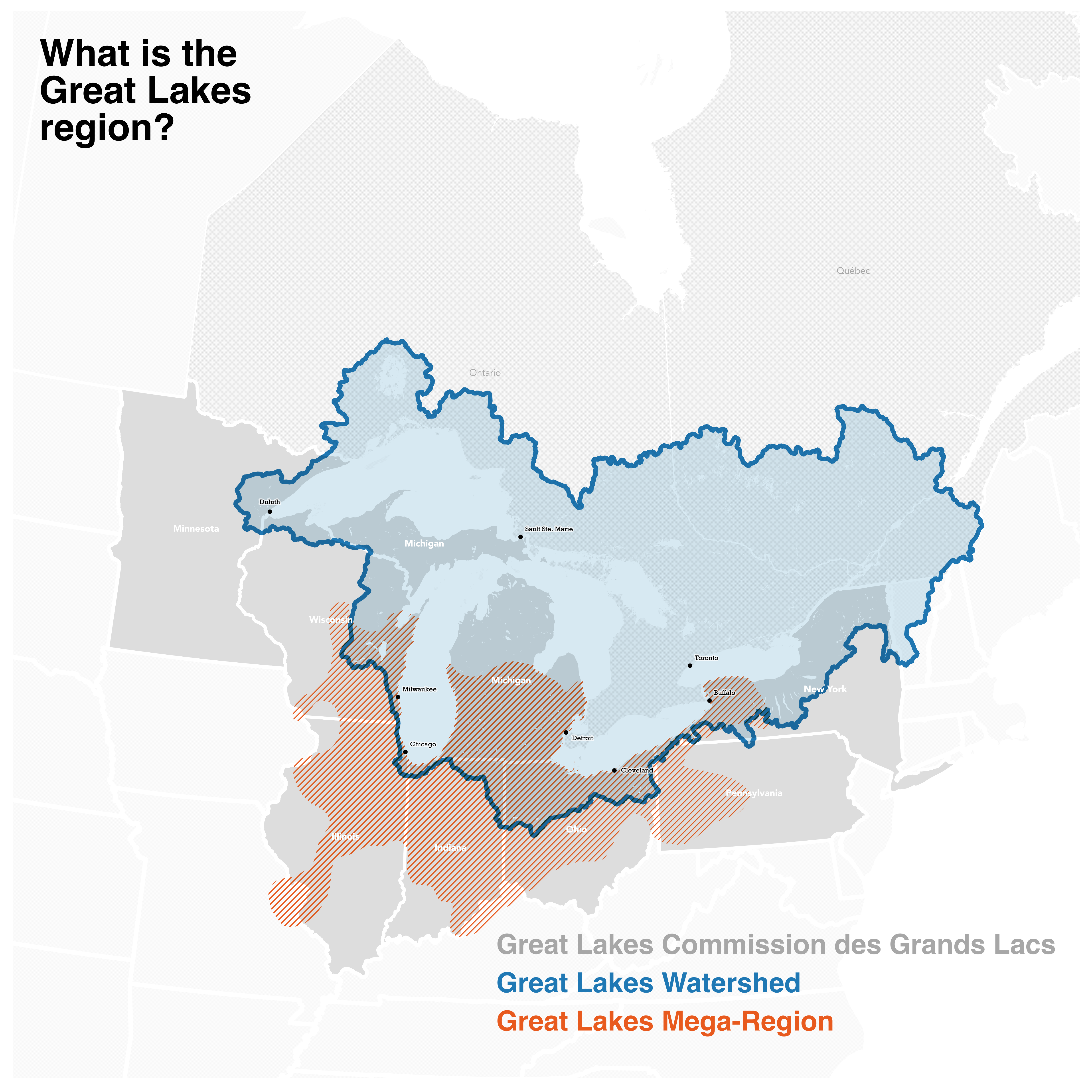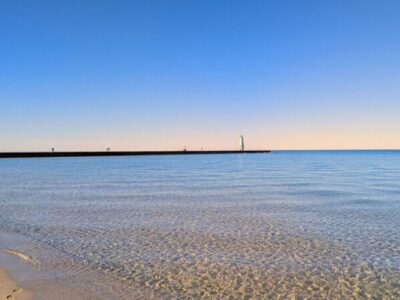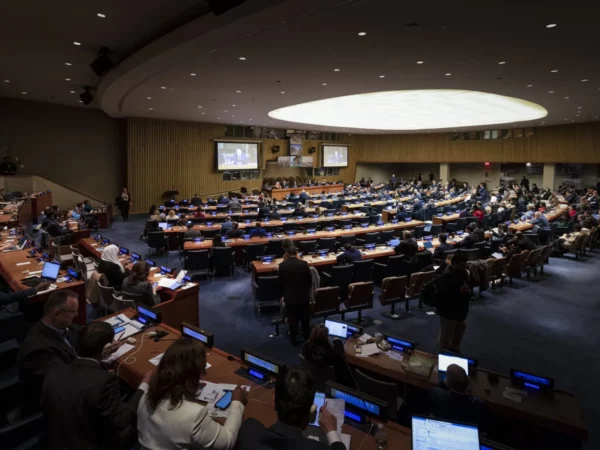

Love staring at a map and discovering something interesting? Then “Mapping the Great Lakes” is for you. It’s a monthly Great Lakes Now feature created by Alex B. Hill, a self-described “data nerd and anthropologist” who combines cartography, data, and analytics with storytelling and human experience. He’s the founder of DETROITography and authored “Detroit in 50 Maps,” a book published in 2021. Find all his Great Lakes Now work HERE.
Beyond the obvious proximity to the five Great Lakes, what makes a region? The Midwest has its own stereotypes – the Rust Belt has become a popular term for northern post-industrial cities – but perhaps the draw of the Earth’s bounty of freshwater is more meaningful?
Aside from the cultural influence of the lakes, the Great Lakes region is a combination of environmental science, politics and economy.
The Great Lakes watershed, also called the Great Lakes Basin, contains 84% of the surface freshwater in North America and 21% of the surface freshwater in the whole world.
The basin stretches 750 miles east to west encompassing 10% of the U.S. population and 30% of the Canadian population. In 1955, the Great Lakes Compact formed the Great Lakes Commission in order to preserve and protect the vast water resources of the Great Lakes. Eight U.S. states make up the voting members of the Great Lakes Commission, with Ontario and Quebec holding non-voting seats.
The economic reach of the Great Lakes mega-region as defined by the Regional Plan Association utilized population density and population growth data to identify significant regions. The Great Lakes mega-region includes over 55.5 million people, or nearly 20% of the U.S. population.
Take a closer look at the map here:

(Map created by Alex Hill for Great Lakes Now)Editor’s Note: A correction was made on Sept. 16, 2021, to reflect that both Ontario and Quebec hold non-voting seats in the Great Lakes Commission.
Catch more news on Great Lakes Now:
Bridge Over Warming Water: Grants fund fish habitat conservation projects around the Great Lakes
Raising Fish: An inside look at how one hatchery is helping to restore native Great Lakes species
Adaptation vs. Mitigation: Canada’s national climate change adaptation strategy needs balance
API key not valid. Please pass a valid API key.



